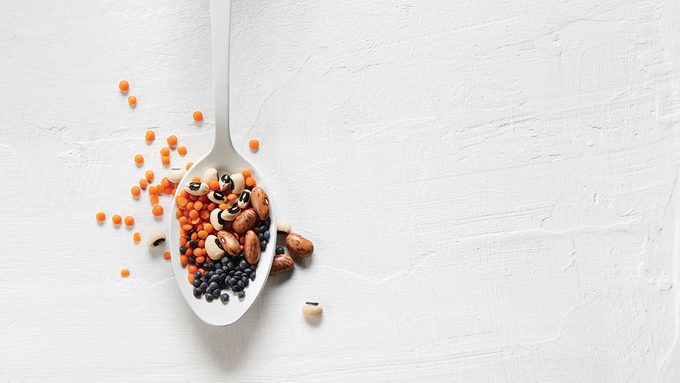Why You Should Start Adding These Nutritional Powerhouses to Your Diet
And if you’re not a fan of pulses, this may just change your mind.

Not every salad needs to start with greens, so why not make pulses your number one?
The international year of the pulse has come and gone, but when something is this nourishing, we say it’s worth celebrating any year, any day. Pulses refer to any beans, lentils, chickpeas or dried peas. They’re nutritional powerhouses that are naturally low in fat and sodium, and are cholesterol-free. With the new proposed Canada’s Food Guide moving away from its traditional emphasis on animal proteins, we’re confident that pulses will have their permanent place in Canadians’ diets for decades to come.
The benefits of these nutrient-packed superfoods
One 2014 meta-analysis found that eating pulses for just three weeks significantly reduced LDL cholesterol (that’s the bad stuff), lowering the risk for heart attack and stroke. All it took was about 3/4 cup each day, the equivalent of one food guide serving.
Related: Why You Might Want to Switch to Organic Spinach
Pulses are also considered an excellent source of soluble and insoluble fibre, with a 1/2 cup providing a whopping seven to 17 grams of the good stuff. A recent Harvard study found that dietary fibre was linked to a 40 percent lower risk of coronary heart disease in men. Fibre has also been shown to help reduce the risk of breast cancer, help keep us regular, and manage our weight since it keeps us feeling satiated longer.
And don’t forget about protein. Pulses typically contain about twice the amount of plant-based protein found in whole grains like wheat, oats, barley and rice.
A big bowl of chili or a classic bean salad is always a welcome way to pack in the pulses, but we’ve got some exciting dishes to switch things up. So, bring on Meatless Monday with our protein-packed Beet, Cherry and Lentil Salad.




